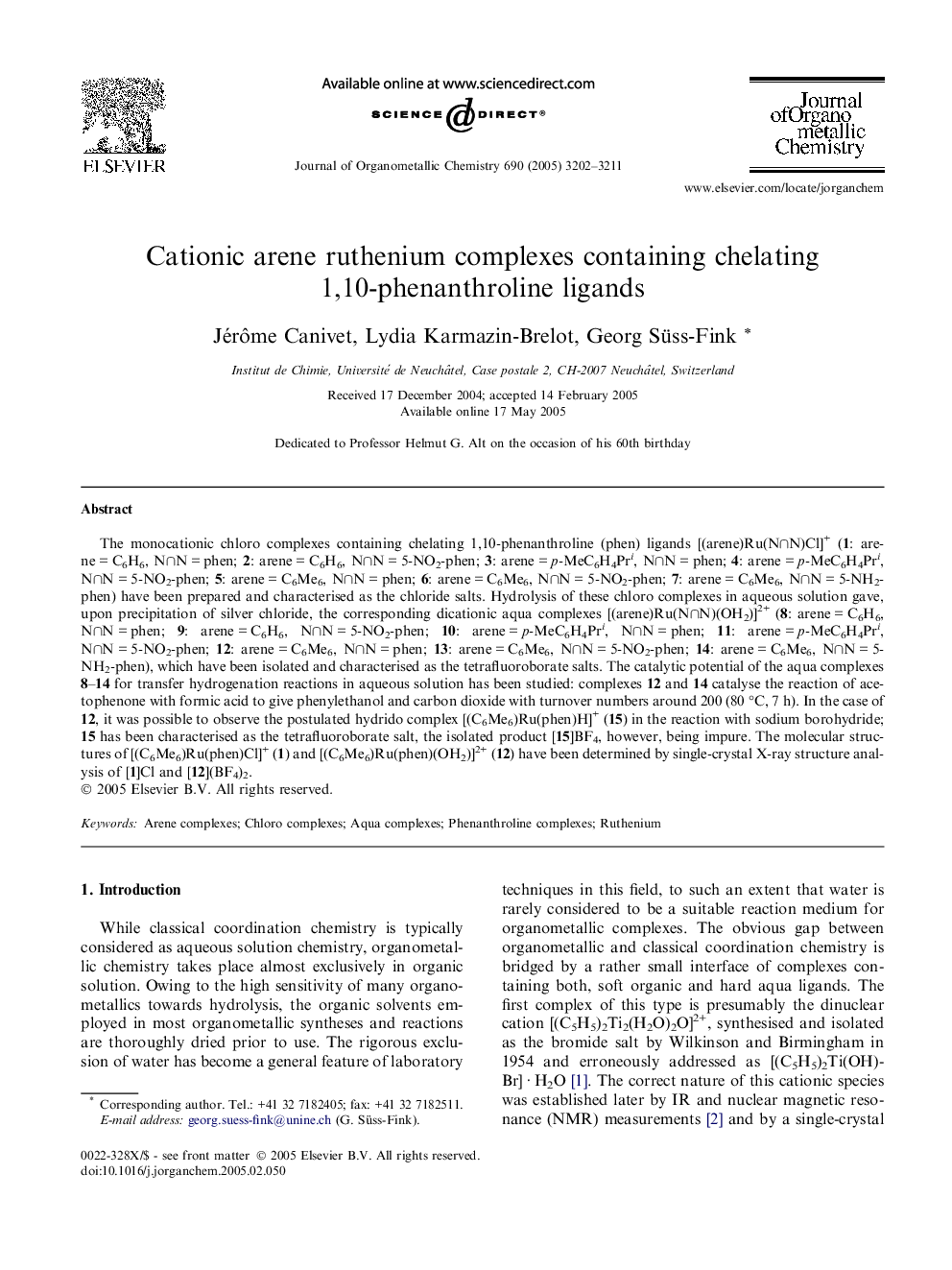| Article ID | Journal | Published Year | Pages | File Type |
|---|---|---|---|---|
| 1327379 | Journal of Organometallic Chemistry | 2005 | 10 Pages |
The monocationic chloro complexes containing chelating 1,10-phenanthroline (phen) ligands [(arene)Ru(N∩N)Cl]+ (1: arene = C6H6, N∩N = phen; 2: arene = C6H6, N∩N = 5-NO2-phen; 3: arene = p-MeC6H4Pri, N∩N = phen; 4: arene = p-MeC6H4Pri, N∩N = 5-NO2-phen; 5: arene = C6Me6, N∩N = phen; 6: arene = C6Me6, N∩N = 5-NO2-phen; 7: arene = C6Me6, N∩N = 5-NH2-phen) have been prepared and characterised as the chloride salts. Hydrolysis of these chloro complexes in aqueous solution gave, upon precipitation of silver chloride, the corresponding dicationic aqua complexes [(arene)Ru(N∩N)(OH2)]2+ (8: arene = C6H6, N∩N = phen; 9: arene = C6H6, N∩N = 5-NO2-phen; 10: arene = p-MeC6H4Pri, N∩N = phen; 11: arene = p-MeC6H4Pri, N∩N = 5-NO2-phen; 12: arene = C6Me6, N∩N = phen; 13: arene = C6Me6, N∩N = 5-NO2-phen; 14: arene = C6Me6, N∩N = 5-NH2-phen), which have been isolated and characterised as the tetrafluoroborate salts. The catalytic potential of the aqua complexes 8–14 for transfer hydrogenation reactions in aqueous solution has been studied: complexes 12 and 14 catalyse the reaction of acetophenone with formic acid to give phenylethanol and carbon dioxide with turnover numbers around 200 (80 °C, 7 h). In the case of 12, it was possible to observe the postulated hydrido complex [(C6Me6)Ru(phen)H]+ (15) in the reaction with sodium borohydride; 15 has been characterised as the tetrafluoroborate salt, the isolated product [15]BF4, however, being impure. The molecular structures of [(C6Me6)Ru(phen)Cl]+ (1) and [(C6Me6)Ru(phen)(OH2)]2+ (12) have been determined by single-crystal X-ray structure analysis of [1]Cl and [12](BF4)2.
Graphical abstractArene ruthenium dichloride dimers react with phenanthroline (phen) derivatives, N∩N, to give cationic chloro complexes of the type [(arene)Ru(N∩N)Cl]+, which undergo hydrolysis in the presence of silver salts in aqueous solution to give the corresponding dicationic aqua complexes [(arene)Ru(N∩N)(H2O)]2+. The aqua complex [(C6Me6)Ru(phen)(H2O)]2+, which was found to catalyse the transfer hydrogenation of acetophenone to phenylethanol, can be converted with sodium borohydride into the corresponding hydrido complex, supposed to be a catalytic intermediate.Figure optionsDownload full-size imageDownload as PowerPoint slide
